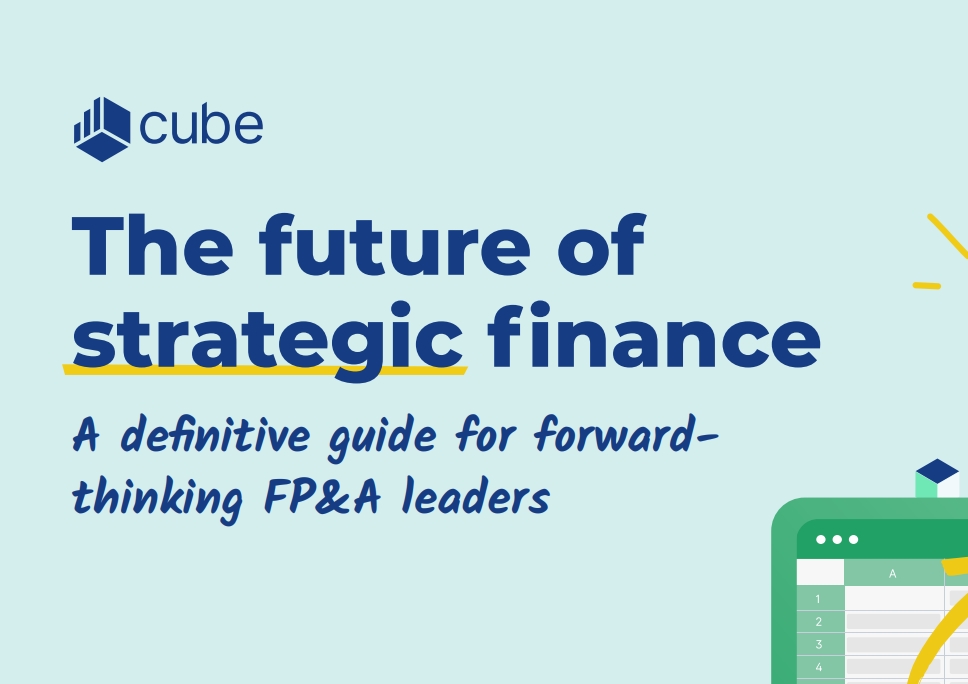Introduction
The role of finance has evolved dramatically—from a back-office function focused on compliance and record-keeping to a strategic powerhouse shaping business decisions. Today’s CFOs, finance and FP&A leaders are no longer just number crunchers; they are pivotal in driving growth, optimizing resources, and navigating market uncertainties.
For forward-thinking and business-oriented CFOs and FP&A leaders, the shift to strategic finance is not optional—it’s essential. Businesses that fail to integrate finance into their strategic planning risk falling behind in an increasingly competitive landscape.
In this comprehensive guide, we’ll explore:
- The core pillars of strategic finance
- How technology is revolutionizing FP&A
- Best practices for integrating finance into business strategy
- Actionable insights for aspiring CFOs and FP&A leaders to elevate their roles
Whether you’re a finance leader looking to refine your strategy or an aspiring CFO preparing for the next step, this guide will equip you with the tools to transform your finance function into a strategic driver of success.
Chapter 1: Building a Future-Proof Financial Foundation

Why a Strong Financial Foundation Matters
Just as a skyscraper needs a solid foundation to withstand storms, businesses need robust financial systems to navigate market volatility and drive growth. A strategic CFO ensures this foundation is built on three critical pillars:
- Data Integrity
- “Garbage in, garbage out.” Flawed data leads to poor decisions.
- Key Practices:
- Data Governance: Establish rules for data collection, access, and compliance.
- Data Cleaning: Regularly audit and correct financial records.
- Data Consolidation: Integrate siloed data into a unified system for accurate insights.
- Thorough Reporting & Analysis
- Move beyond static reports to actionable insights.
- Key Strategies:
- Use KPIs that align with business goals (e.g., CAC, LTV, ARR).
- Apply the “5 Whys” technique to uncover root causes of trends.
- Benchmark performance against industry standards.
- Robust Financial Planning & Modeling
- Scenario planning prepares businesses for uncertainty.
- Key Tools:
- Cash Flow Forecasting: Predict liquidity needs and avoid shortfalls.
- Operational Budgeting: Align budgets with strategic objectives.
- Break-Even Analysis: Assess project viability before committing resources.
Pro Tip: Automate repetitive tasks (e.g., reporting) to free up time for strategic analysis. Tools like Cube streamline data consolidation and modeling.
Chapter 2: Cultivating a Strategic Finance Mindset

The Four Pillars of Strategic Financial Leadership for CFOs and FP&A Leaders
To transition from tactical FP&A to strategic CFOs, finance leaders must master these pillars:
1. From Analysis to Leadership
- Automate routine tasks (e.g., monthly closings) to focus on big-picture strategy.
- Example: An FP&A director automated reporting, freeing time to analyze market trends and devise a new pricing strategy that boosted margins by 15%.
2. Strategic Goal Setting in Planning
- Align financial models with long-term business vision (e.g., 5-year projections).
- Example: A healthcare CFO modeled expansion into new markets, securing board approval for a $10M investment.
3. Market-Centric Financial Strategy
- Monitor industry trends (e.g., tech disruptions, regulatory changes).
- Example: A consumer electronics CFO leveraged market research to pivot into IoT, future-proofing revenue streams.
4. Scenario Planning for Risks & Opportunities
- Model multiple futures (e.g., recession, rapid growth).
- Example: A software CFO analyzed GDPR’s impact, turning compliance into a new product opportunity.
Key Takeaway: Strategic CFOs don’t just report numbers—they anticipate, advise, and act.
Chapter 3: Leveraging Technology for Strategic Advantage
The Tech Stack Transforming Finance
| Technology | Impact on FP&A | Example Tools |
| AI & Machine Learning | Predicts trends, automates forecasting | Cube, Adaptive Insights |
| Data Visualization | Simplifies complex data for stakeholders | Tableau, Power BI |
| Cloud-Based FP&A | Enables real-time collaboration | Anaplan, Oracle EPBCS |
Case Study: A retail CFO used AI-driven demand forecasting to reduce inventory costs by 20% while improving stockouts.
Action Step: Audit your tech stack. Prioritize tools that integrate seamlessly (e.g., Excel-native platforms like Cube) to avoid workflow disruptions.
Chapter 4: Integrating Finance into Business Strategy
How CFOs Become Strategic Partners
- Align with OKRs
- Tie financial goals to company objectives (e.g., “Reduce CAC by 10% to fund R&D”).
- Collaborate Cross-Functionally
- Work with Sales, Marketing, and Ops to co-create budgets.
- Communicate with Impact
- Use storytelling to make data relatable (e.g., “This ROI funds 5 new hires”).
Pro Tip: Present to the board using visual dashboards that highlight strategic trade-offs.
Chapter 5: Best Practices Strategic Finance
- Continuous Learning
- Stay ahead with courses on AI, ESG, and predictive analytics.
- Data-Driven Decisions
- Replace gut calls with scenario-based modeling.
- Build Agile Teams
- Hire for strategic thinking (e.g., ex-consultants, data scientists).
- Champion Sustainability
- Integrate ESG metrics into financial reporting.
Conclusion: The Strategic CFO’s Playbook
The future belongs to CFOs who think like CEOs. By:
- Founding finance on data integrity,
- Leading with strategic foresight,
- Leveraging cutting-edge tech, and
- Embedding finance into every business decision,
you’ll transform from a support function to a growth catalyst by applying these strategic finance mindset and practices.
Ready to elevate your finance strategy? Book a consultation with NeoForm’s partners to build a future-proof financial foundation, become a strategic CFO and do strategic finance jobs.
Thanks to Cube for sharing this insightful guide. You can download full guide here or through NeoForm’s LinkedIn page.
